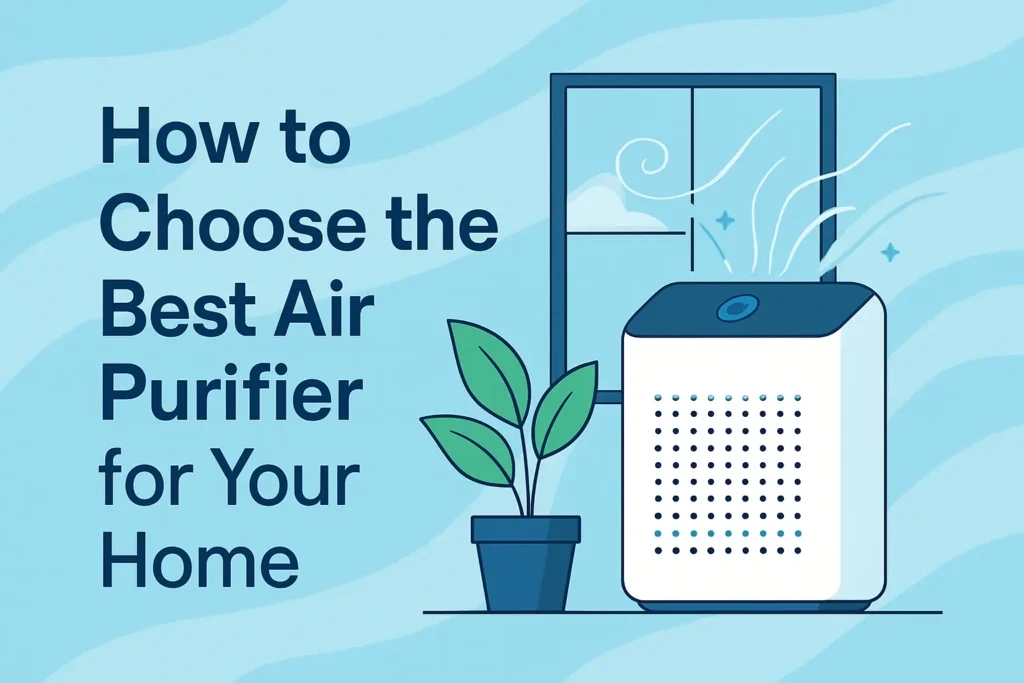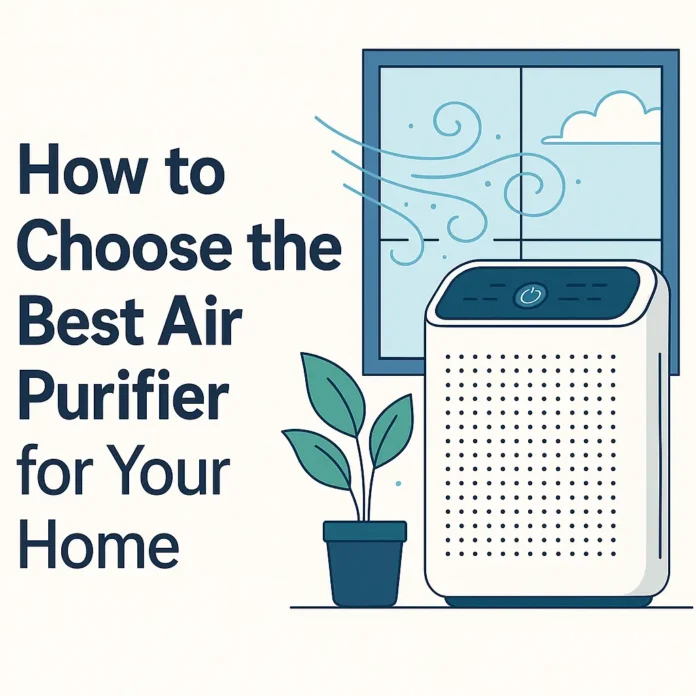Struggling with allergies or indoor air pollution? Choosing the best air purifier for your home in 2025 is more important than ever. With rising pollution levels and increasing health concerns, air purifiers have become essential household appliances—especially in cities like Delhi, Mumbai, and Bangalore. In this guide, we’ll help you find the best air purifier for home use, explain how different types of filters work (like HEPA and activated carbon), and share expert tips to improve your indoor air quality. Whether you’re looking to reduce allergens, remove smoke, or breathe cleaner air, this article has everything you need to make an informed decision.
Checkout The Truth About Weight Loss: Is It Fat Loss You’re After?
Understanding the Need for an Air Purifier
Indoor air can often be more polluted than outdoor air due to limited ventilation and the accumulation of pollutants from various sources like cooking, cleaning agents, and outdoor contaminants. According to the World Health Organization, indoor air pollution is responsible for approximately 3.8 million deaths annually.
Air purifiers help mitigate these risks by filtering out harmful particles, allergens, and pollutants, ensuring cleaner and healthier air inside your home.

Key Features to Consider When Choosing an Air Purifier
1. Filter Type
- HEPA Filters: High-Efficiency Particulate Air (HEPA) filters can capture 99.97% of particles as small as 0.3 microns, including dust, pollen, and pet dander.
- Activated Carbon Filters: Effective in removing odors, smoke, and volatile organic compounds (VOCs) by adsorbing gaseous pollutants.
- Pre-Filters: Capture larger particles like hair and dust, extending the life of HEPA filters.
2. Room Size Compatibility
Ensure the air purifier is suitable for the size of your room. Check the Clean Air Delivery Rate (CADR) to determine its efficiency in purifying air in specific room sizes.
3. Noise Level
Consider the noise level, especially if you plan to use the purifier in bedrooms or study areas. Look for models with noise levels below 50 decibels for a quieter operation.
4. Maintenance and Filter Replacement
Regular maintenance is crucial for optimal performance. Check the frequency and cost of filter replacements before purchasing.
Top Air Purifiers Available in India
1. Philips AC1711/63 In Air Purifier
- Features: 3-layer HEPA filtration system that removes 99.97% of allergens, dust, pollen, and viruses.
- Best For: Large rooms and bedrooms.
- Buy Now: Philips AC1711/63 In Air Purifier
2. Coway Airmega Aim Professional Air Purifier
- Features: Stylish design with 360° dynamic purification and powerful filtration.
- Best For: Modern spaces and living rooms.
- Buy Now: Coway Airmega Aim Professional Air Purifier
3. Airth Air Purifier for AC Winter Version AQI 200
- Features: Designed to be used with split ACs, offering practical solutions for maintaining clean air during colder months.
- Best For: Homes with split AC systems.
- Buy Now: Airth Air Purifier for AC Winter Version AQI 200
4. Honeywell Move Pure 3 Car Air Purifier
- Features: Compact and advanced air purifier designed for cars, offering effective air purification on the go.
- Best For: Car interiors and travelers.
- Buy Now: Honeywell Move Pure 3 Car Air Purifier

Frequently Asked Questions (FAQs)
Q1: How often should I replace the filters in my air purifier?
A: It depends on the usage and the manufacturer’s recommendations. Typically, HEPA filters should be replaced every 6-12 months, while activated carbon filters may need replacement every 3-6 months.
Q2: Can air purifiers remove viruses and bacteria?
A: HEPA filters can capture bacteria and some viruses, but for enhanced protection, consider purifiers with UV-C light or additional antimicrobial features.
Q3: Are air purifiers effective against smoke and odors?
A: Yes, air purifiers with activated carbon filters are effective in removing smoke, odors, and VOCs from the air.
Q4: Where should I place my air purifier for maximum efficiency?
A: Place the air purifier in a central location within the room, away from walls and obstructions, to allow unobstructed airflow.
🌿 Additional Tips for Improving Indoor Air Quality
- Ventilation: Regularly ventilate your home to reduce indoor pollutants.
- Houseplants: Incorporate indoor plants known for air-purifying properties, such as spider plants and peace lilies.
- Avoid Smoking Indoors: Smoking indoors significantly deteriorates air quality.
- Use Natural Cleaning Products: Opt for eco-friendly and non-toxic cleaning agents to reduce chemical pollutants.
Also Checkout Control High Blood Sugar Fast with These 8 Doctor Recommended Strategies
Conclusion: Breathe Easier with the Right Air Purifier
Choosing the right air purifier for your home isn’t just about cleaner air—it’s about investing in your family’s long-term health. By understanding your specific needs, room size, and filter types like HEPA, activated carbon, or UV-C, you can select a purifier that effectively tackles indoor pollutants, allergens, and odors. Whether you’re in a metro city dealing with high pollution or simply want to improve air quality indoors, the options mentioned above offer reliable, efficient solutions. Don’t wait until symptoms show up—take control of your indoor environment today and experience the benefits of clean, breathable air every day.


